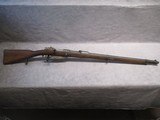 |
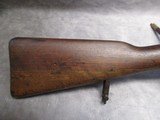 |
 |
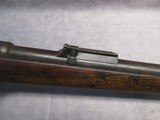 |
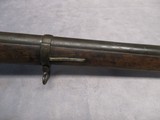 |
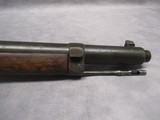 |
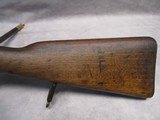 |
 |
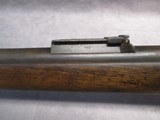 |
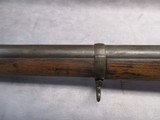 |
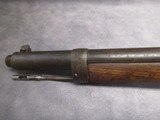 |
 |
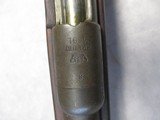 |
 |
 |

Turkish Erfurt Commission Model 1888 Rifle 8x57mm Mauser S-bore
Guns International #: 102019366 Seller's Inventory #: 22-10101
Category: Military Rifles - Antique - Military Rifles - German
Seller's Information
When emailing or calling sellers direct, please mention that you saw their listing on GunsInternational.com
Seller: Shooter's Supply, LLC.
Member Since: 3/16/16
First Name: Patrick
Last Name: Brown
State: Tennessee
Zip: 37343
Country: United States
Phone: (423) 875-4868
Number of Active Listings: 24
Total Number of Listings: 1372
Seller: FFL Dealer
Return Policy: 3 day inspection and return policy on used guns.
We normally ship USPS Priority Mail which should be 2-day ship. Shipping is actual cost with a minimum of $30.00 for pistols and $50.00 for rifles/shotguns to ship to most of the 48 contiguous states. Shipping to Alaska may require an extra fee. Shipping insurance is available upon request for an extra fee. We cannot do international sales. As of November 2019, we no longer ship guns to California and Hawaii.
Payment Types Accepted: Visa, Master Card, American Express, USPS Money Order. NO CREDIT CARD FEES!!!
About Us: We are a small family owned business located in Hixson, Tennessee. Do you have firearms at home collecting dust? We have a lively consignment business. Our fee is 20% with a $50 minimum. Firearms are consigned for a an average period of 180 days but the length of period is negotiable. We also do handgun carry permit classes for the state of Tennessee. We have a nice indoor shooting range with reasonable rates. Please check us out at shooterssupply.
Description:
The Gewehr 1888 or Commission Model 1888 as it is more commonly known, was Germany’s only military rifle of the 19th Century that was NOT designed by Paul Mauser, designer of the legendary M1896 Broomhandle semi-auto pistol and the Gewehr 1898 rifle. The Commission Model 1888 was in fact designed by the German Rifle Commission. Previously, Paul Mauser had designed the Model 1871 single-shot bolt-action rifle for the then Prussian Military, which adopted in 1871. In 1884, Mauser redesigned the rifle with a tube fed magazine, creating the Model 1871/84, which was adopted by the German Army in that year. In 1886, the French became the first country to adopt smokeless powder for use in a military cartridge and rifle, creating the M1886 Lebel rifle and its 8x50mmR Lebel cartridge. Germany new they had to follow suit quickly. Unfortunately, Paul Mauser was busy, designing a rifle to fulfill a Turkish contract. In 1887, he received a contract for 500,000 rifles and 50,000 carbines from the Turkish Government (technically the Ottoman Empire at that time) chambered for Mauser’s last black powder cartridge, the 9.5x60mmR Turkish. The German government, unwilling to wait, set up the German Rifle Commission to design both a new rifle and cartridge to replace the M71/84 and the 11x60mmR cartridge it used, both of which were obsolete by that time. Sadly, during the design process, the Commission appropriated several of Mauser’s design features from his previous rifles without paying the man the royalties he was owed for the patents he held. Paul Mauser ultimately proceeded with his own design, the Model 1889 Belgian Mauser chambered for the 7.65x53mm Belgian cartridge. The supreme irony to all this is that the Ottoman Empire ended up using both the M89 Belgian Mauser AND the Commission Model 1888 rifle during World War I, with both rifles being chambered for their respective cartridges, complicating their ammunition supply. For the 1888 rifle, the Commission developed the 8x57mm Patrone 88 cartridge, also known as the 8x57 I, where the “I” stands for “Infanterie” or “Infantry” in English. This used a 0.318” diameter, 227 grain, round-nosed bullet backed by 42.4 grams of smokeless powder in a “rimless” case 57mm in length. Paul Mauser was not involved in the process in any way. Eventually, when the Mauser Gewehr 1898 rifle was created, the Patrone ’88 was redesigned as the 8mm S-Patrone. Here, the “S” stands for “Spitsgeschoss”, or “Pointed Projectile”. This version featured a 0.323” diameter, 153 gr, spitzer bullet backed by a more-powerful variant of the smokeless powder which combined the original nitrocellulose with nitroglycerin, resulting in a 38 percent higher muzzle velocity. While early 1888 rifles where not safe to shoot with the new round, many examples produced after 1895 where rechambered to shoot the S-Patrone and these have the letter S stamped onto the top of the receiver. The rear sights on these rifles have been altered to account for the new trajectory. Finally, many rifles were altered to use the new Gewehr 98 rifles stripper clip instead of the original Mannlicher style clips. These rifles are known as the Model 88/05, the “05” indicating the year 1905, when the stripper clip modification occurred. It is this version of the ’88 that the Turks used alongside their M89 Belgian Mausers. The Commission rifle is unique among most military bolt action rifles in that it has a shroud around the barrel, similar in appearance to the shroud used on the Remington Model 8 and 81 semi-auto rifles. This feature was not used on any of Paul Mauser’s military rifles.
The rifle shown here is one of the Turkish examples. This is easily verified by looking at the rear sight markings where the numbers are given as Arabic numerals. Most of the parts are non-matching which is typical for these rifles. The receiver has the “S” stamp of course. The bluing has turned to a patina for the most part. A cleaning rod is present. There is some light pitting in various places which is understandable for a rifle that saw hard service, especially during the Great War. The barrel has been counterbored as can be seen in the photos. There is some pitting in the bore, but the rifling is still well-defined. Overall, the rifle should provide some decent accuracy. Only jacketed bullets should be used. Please note that the Guns International “Rifle Caliber’s” box for the entry listing system only gives “8x57 IS” and “8x57 JS” as options. BOTH of these are wrong. Over the years, the “I” in 8x57 I was bastardized to a “J”. There are many explanations for why this occurred with the most common story being that “I” and “J” were used interchangeably at the time. There is no “IS” or “JS”. For this rifle’s entry, I have chosen to use the “JS” option, but it should be clear that this rifle is chambered for the later 8x57 S used in the Mauser 1898 action.
SOLD
Rifle Caliber: 8x57mm JS
Manufacturer: Erfurt Imperial Arsenal
Model: Commission Model 1888
Serial Number: 6129
Bore: Rifled, 4 grooves
Condition: Good
Barrel Type: Shrouded, counterbored
Action: Bolt action
Triggers: Single
Stock: Wood, straight grip
Fore End: Wood
Butt Pad: Metal plate
LOP: 13.0 inches (330 mm)
Finish: Patina
Weight: 8.5 lbs.
Sights: V-notch ladder rear sight, Inverted-V front sight post, sight radius 24.0 inches (610 mm)
Manufacture Date: 1891